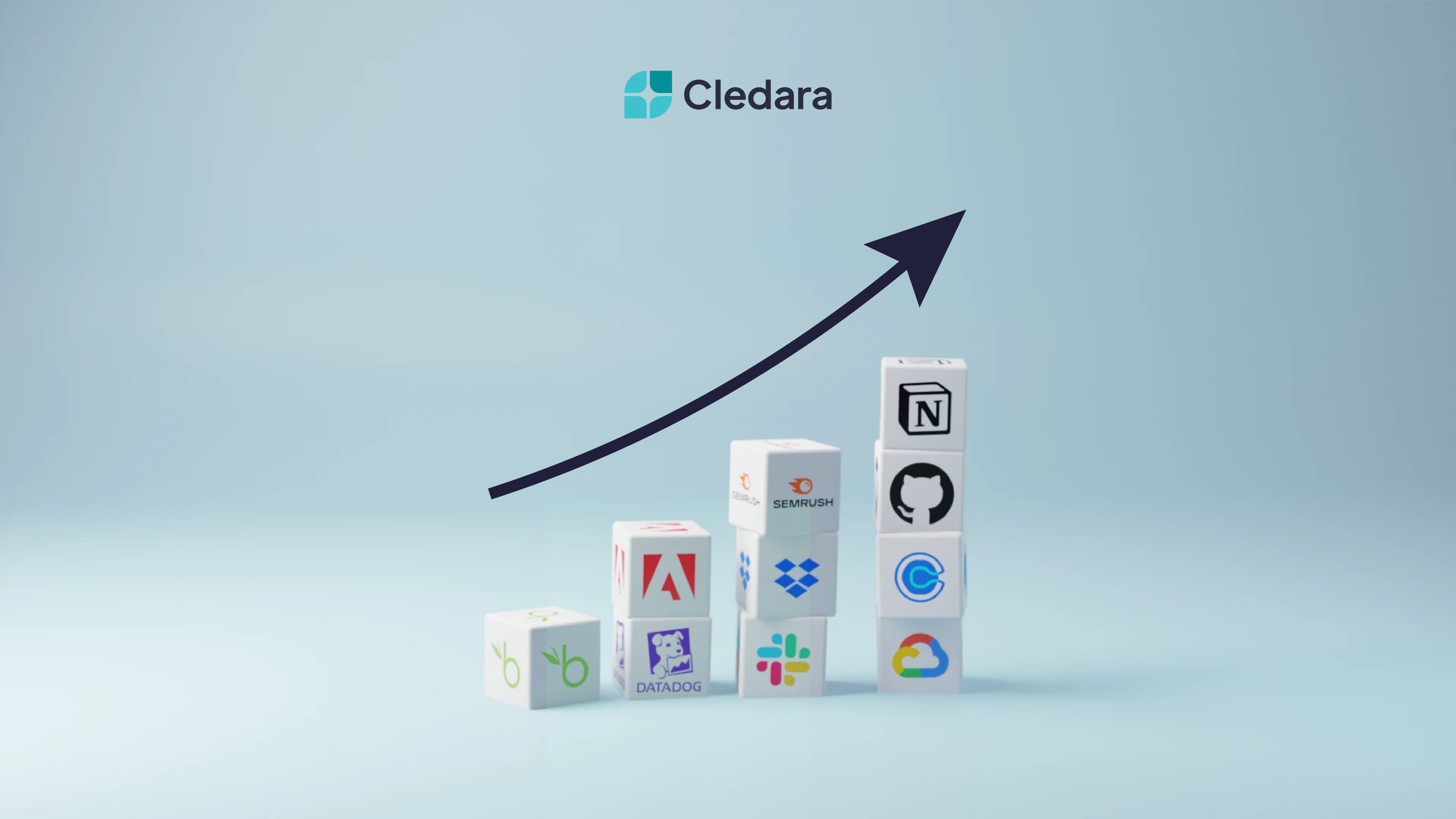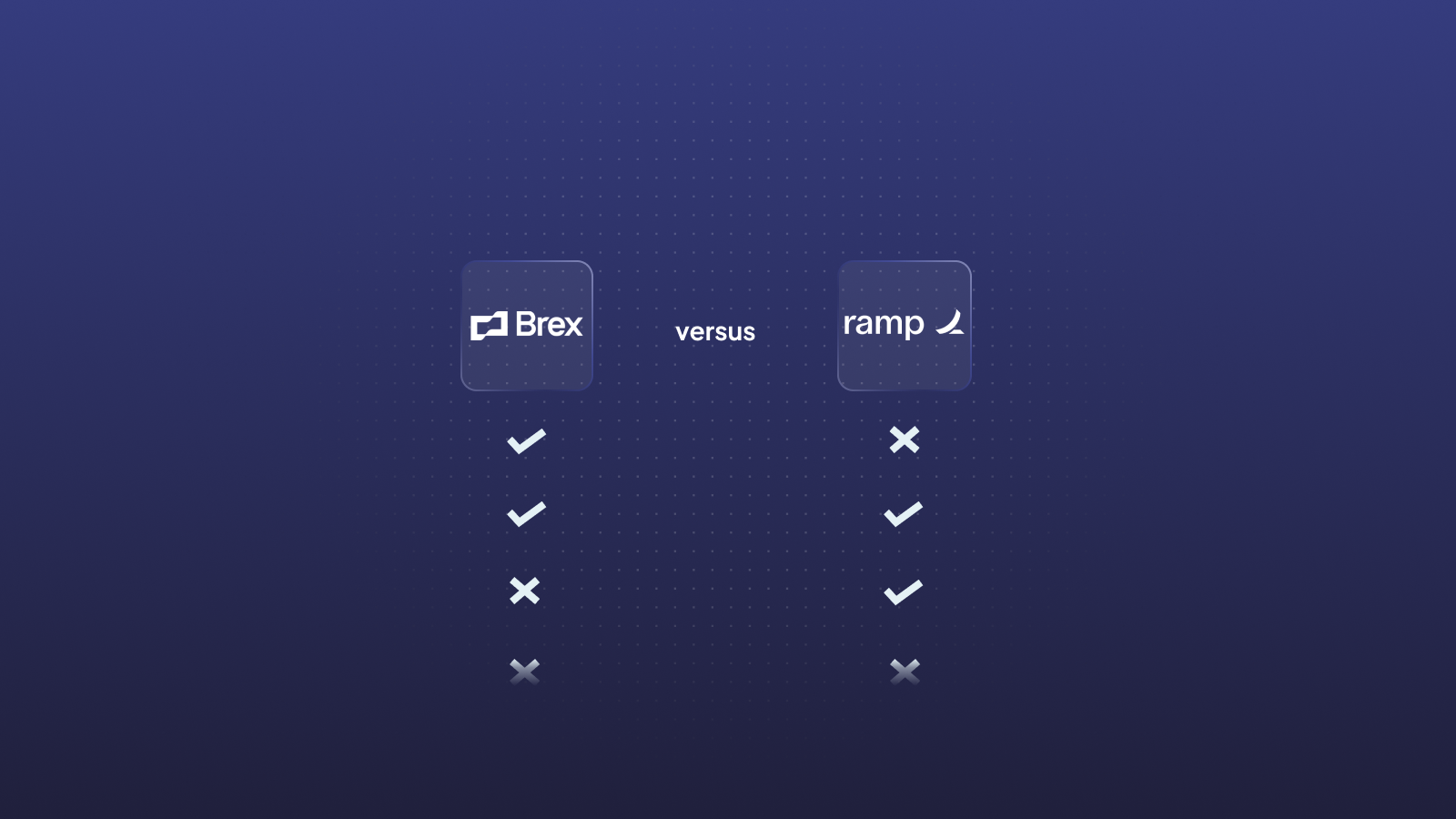The most successful scaleups depend on a powerful software stack to manage operations, streamline processes, and drive growth. However, when these subscription prices increase, keeping your budget in check can become a real challenge.
Are changing prices forcing you to rethink your SaaS budget? Then you’re in the right place.
In this post, we’ll share:
- Why the pricing of your SaaS annual subscriptions may be increasing
- How changing SaaS prices impact scaleups
- 5 must-know SaaS management tips for scaleups
Without further ado, let’s dive in!
Why SaaS Annual Subscriptions Increase their Pricing & How It Affects Scaleups**
Whether for customer journey tracking, internal communication, or process automation, scaleups benefit immensely from SaaS tools.
In fact, according to our 2023 SaaS predictions:
- Businesses are expected to spend $195 billion on SaaS this year, a 17% increase over $167 billion in 2022.
- SaaS represents about a third of total cloud spending.
SaaS solutions will continue to have a positive impact on startups & scaleups in the near future. They'll continue to help teams to prevent overhiring, maximize productivity, and break down information silos. However, despite these pros, SaaS software subscriptions are not exempt from price increases.
Some factors that may increase your SaaS subscription pricing include:
- The product’s maturity
- The company’s maturity
- Acquisitions
- Your own growth
- Macroeconomics
Let’s dive into each one.
Product Maturity
When a SaaS company launches a product, it usually experiments with price until finding an equilibrium. As new features are added, the tool’s price rises to reflect the added value.
Company Maturity
Early-stage SaaS companies may not be able to predict costs, demand, turnover, customer lifetime value, or product lifecycle. But, as they figure out these key factors, they may increase their pricing to guarantee that their business model is viable.
Acquisition
It's fairly common for SaaS companies to increase their pricing after being acquired. This is usually linked to several factors, including:
- The buying company’s need to see an ROI
- Product maturity & adoption
For instance, after joining Intuit, Mailchimp increased its pricing significantly.
Your Growth
As your scaleup grows, you may need to get more user accounts for a certain tool. Or you may need to upgrade to a more costly plan.
Macroeconomics
Most SaaS companies express their pricing in United States Dollars or Euros. Even if they're based outside the US or the European Union.
If your SaaS vendor’s currency of choice is experiencing inflation, you can expect its pricing to change.
Software pricing increases can really strain companies’ budgets. And they often bring SaaS subscription management challenges.
Therefore, scaleups' financial departments need to carefully evaluate their SaaS subscriptions and ensure they are getting the best value possible.
But, how can you determine if your software stack’s price increases are reasonable? Let’s take a look at some SaaS spend management tips.
How to Stay in Control While Prices Are Rising: 5 SaaS Budgeting Tips**
SaaS subscriptions can feel like an eternal dilemma. While your finance department may seek ways to cut software costs, there are some tools your team can’t do without.
In this section, we’ll share 5 SaaS budgeting tips that will help you manage your software costs, even as prices rise.
We recommend you:
- Create a software inventory
- Carry out a comprehensive audit & cost-benefit analysis
- Conduct SaaS contract negotiations
- Consider open-source software alternatives
- Pick usage-based, pay-per-use, or freemium pricing models
Let’s dive into each option, shall we?
Create a Software Inventory
If you feel like you're in a limbo where you lost track of how many tools you have, it's time to build a minimum viable SaaS stack. And here’s where a SaaS subscription inventory can be truly helpful.
SaaS tool inventories are great for:
- Optimizing your SaaS implementation
- Tracking subscription renewals
Let’s take a closer look.
Optimize your SaaS implementation
With a mindful inventory, you can learn which subscriptions are used, which ones aren't, and what should be added. Thus, you will ensure that your company doesn't incur unnecessary license costs.
Track subscription renewals
Knowing your subscription renewal dates allows you to plan ahead and ensure that you have the budget when necessary. This is especially true if the price will increase after the subscription is renewed. In addition, before the renewal date, you can upgrade, downgrade, or cancel your subscription as appropriate.
Overall, SaaS subscription inventories help companies to:
- Get a complete and up-to-date overview of their software investment
- Stay in control of their software spend
- Make informed FinOps decisions
Carry Out a Comprehensive Audit & Cost-Benefit Analysis
Before any further SaaS procurement, it’s crucial to conduct a cost-benefit analysis and figure out the new tools’ potential impact. That way, you will be able to make informed decisions about which solutions are worth investing in, and which ones won’t make a difference.
Ask yourself:
- Why would we acquire this new tool?
- Would it solve the challenges my team is facing?
- How are these challenges setting us back?
- What would be the impact of overcoming them?
- Are there alternatives that can solve the same problem for a lower price?
- Is there a possibility to test the tool before purchasing a subscription? If so, would this trial period be enough to make an assessment?
Conduct SaaS Contract Negotiations
Some SaaS companies may offer some pricing flexibility to retain their most loyal customers. So, don’t be afraid to ask for legacy pricing or more favorable terms. By negotiating, you can often reduce your expenses and get more value from your tools.
We suggest you:
- Ask the vendor if there’s the possibility of a price freeze if you commit long-term.
- Take a moment to understand the terms and conditions of your SaaS contract
- Stay on the lookout for hidden costs
- Ensure that all agreed-upon terms and conditions are clearly documented and signed by both parties
Consider Open-Source Alternatives
If you’re protecting your budget, open-source solutions can be a cost-effective alternative to paid SaaS tools.
Typically, open-source alternatives have a lower total cost and don't require ongoing licensing fees. Plus, open-source tools can be customized to fit your processes, workflows, and business goals.
Some examples include:
- CRMs such as SuiteCRM
- Operations management tools such as Odoo
- Web development tools such as Atom
- Business analytics software such as Metabase
Pick Usage-Based, Per-User, or Freemium Pricing Models**
There are many SaaS pricing models. And, if leveraged properly, each model can help you optimize your SaaS spending differently.
Some of the most notable models are:
- A usage-based pricing model
- A per-pricing model
- Freemium pricing models
Usage-Based Pricing Model
With usage-based pricing, you'll only pay for your level of usage of a specific service or feature. For instance, cloud storage. This can help you to avoid overspending on features that you barely use.
A usage-based pricing model may be best for you if:
- Your scaleup has predictable use patterns
- You want to cover a very specific need at a very specific moment
Per-User Pricing Model
With a pay-per-user pricing model, you pay a fixed subscription fee according to the number of users implementing a tool. The full product features will only be available to these specific users. These user accounts are often referred to as “seats”.
This model’s greatest advantage is that it’s predictable and transparent. More users = higher costs. Simple as that.
Freemium Pricing Model
Freemium models let companies try products before they buy them. In short, freemium tools offer a free plan that allows users to get a glimpse of their core functionality.
For instance, Loom’s free plan only allows users to record a limited number of videos, of up to 5 minutes each. But that’s enough for them to get a sense of how the tool works and why it’s valuable. And if it suits them, they can eventually upgrade.
This SaaS pricing model may be relevant to you if:
- If you're thinking about switching a tool but want to make sure the new one is right for you.
- A tool’s free features are enough to cover your specific business needs
SaaS Subscription Management Doesn’t Have to Be a Struggle**
Increasing software costs can bring some uncertainty to your business. But, as you can see, there are many ways to keep your SaaS budget in check.
In this post, we shared 5 SaaS spend optimization tips. That may sound like a lot of work and a tedious process. But, what if we told you that you can take back control of your SaaS spending without filling out spreadsheets or chasing invoices?
With Cledara, you will:
- Manage & track your SaaS apps effectively, from one simple platform
- Easily view all your software subscriptions in one place
- Detect unnecessary software spending
- Create virtual cards with spending limits for different subscriptions
- Keep your SaaS login credentials secure
- Get 2% cash back on all your subscriptions
- And much more
Your tools shouldn't hold you back. Book a demo and discover Cledara today!





.webp)


.webp)

.webp)



%2520(1).webp)
.webp)
